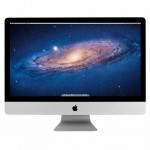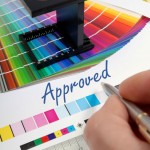Let our professional graphic designers keep your company artwork up to date and looking sharp. Our design team provides creative solutions through experience and originality.
If you provide your own artwork, trying to keep charges for
artwork/design/typesetting as low as possible, please read
the following information.
Supported Applications:
- Mac OS and Windows:

- Adobe Acrobat
- Adobe Illustrator
- Adobe InDesign
We do not ACCEPT files in: Word, Publisher, MS Excel, Access (However: you can save them as a PDF or TIF).
Fonts
When providing artwork for print, you will need to inform us what fonts you have used (so we can check if we have these fonts available), or PDF files should be supplied with fonts converted to outlines.
We recommend all artwork to be supplied as PDF. Other available Formats: PDF, TIFF, JPG, EPS files.
Measurements / Printing page sizes (excluding bleed)
- BC 90mm x 54mm (94x58mm, with 2mm bleed)
- DL 99mm x 210mm (103x214mm, with 2 bleed)
- A6 148 mm x 105mm (152x109mm, with 2mm bleed)
- A5 148mm x 210mm (152x214mm, with 2mm bleed)
- A4 210mm x 297mm (214x301mm, with 2mm bleed)
- A3 297mm x 420mm (301x424mm, with 2mm bleed)
- A2 420mm x 594mm (424x598mm, with 2mm bleed)
- A1 594mm x 840mm (598x844mm, with 2mm bleed)
- A0 840mm x 1189mm (844x1193mm, with 2mm bleed)
Artwork Checklist:
- Any elements that bleed, must extend at least 2-3 mm outside the trim area, for Books allow for 5mm bleed (Bleed is when an illustration, background or image is extended beyond the trim edge of the page. This allows for a small amount of movement that may occur when the page is being cut to size.) Text should be at least 3mm from the trim area, or 5mm when including the bleed, for books 8mm.
- All documents must be set to the actual printed size
- Do not use rules narrower than 0.3 points. (These may not appear in the final printed product)

- 1-up on a single page
- Convert your text to outlines outlines in your file
- Please ensure that all images are 300 DPI or higher when placed at 100%, with larger images, where you are actually further away, think of posters, signage etc, you can deliver with a minimum of 150 DPI.
- Tints set at less than 5% or over 95% may drop off or appear as solid
- In full colour printing, colours are made by a combination of CMYK (Cyan, Magenta, Yellow and Black), there is a maximum of 280% colour occupancy. If higher, the ink will saturate the paper and may not produce the desired result.
- Transparency can arise due to various causes. The result in your layout program is as you wish, but the printed matter can experience strange distortions. The pressing technique is not always able to print the image 1-to-1 as you deliver. For transparencies we therefore recommend that you flatten them if possible (flattening) and merge the layers to 1 layer. This prevents possible, undesirable results in the printed matter. Copecats Printers does not check for transparencies. Unfortunately, only after delivery is clear whether transparency has been used and/or the printed matter is satisfactory. Copecats Printers is not responsible for checking transparencies.
- All links are embedded
- Nominate all colours as CMYK or Pantones (PMS), CMYK (Cyan, Magenta, Yellow, Black) – these are the colours used for full-colour printing. For a Pantone (PMS) colours, the artwork must be supplied containing only the PMS colours. The PMS colours must be selected from the Pantone Solid Uncoated range (for printing on bond paper) or Pantone Solid Coated range (for printing on coated gloss or silk paper).
- If mailing your material please include a colour or a black & white proof copy of your file (reminder: include all fonts, scans and linked items)
- Do not embed EPS files inside other EPS files. Nesting EPS files can cause output errors and substantially increase processing time.
- Border, a margin/strip around the outer edge of the artwork.
Recommended Production Tips
Remove any unwanted elements on the pasteboard or abscured by other items. Ensure picture boxes are coloured white except for deep etched images. When placing images in the document, round off enlargement / reduction percentages. For optimum result, do not enlarge images more than 30%. Images should not be rotated within the picture box although picture boxes may be rotated. Rotations should also be rounded off. Check EPS files linked to the document and delete any elements not destined to print.
Tips for proofreading
File formats explained
Printing Information
- Celloglaze is a plastic film heat bonded to printed products such as business cards, flyers, book covers and postcards. This provides protection, as well as a matt or gloss finish. It can be applied to one side, or both sides.
- Half Fold is a method of folding where the paper is folded in half down the centre of the page.
- Roll Fold is a method of folding in which the two panels on the edge of the page fold in over the centre panel.
- Z Fold is a method of folding in which each fold opens in the opposite direction to its neighbour, giving a pleated effect.
- Saddle Stitch is a form of binding used to create magazines and booklets, the magazine or booklet is stapled through the middle fold of its sheet using two wire staples.
- Perfect Binding is a form of booklet making in which all pages are glued along the spine using special adhesive.
- Coated paper Coated paper has a glossy or matt finish. It is generally very smooth and can be either semi shiny (gloss) or subtle shiny (matte / silk). Coating restricts the amount of ink that is absorbed by the paper and how the ink bleeds into the paper
- Uncoated paper Uncoated paper does not have a coating. When printed on, the ink is absorbed into the paper and this characteristic means images printed on uncoated stock are softer and warmer, less crisp and defined.
CAUTION
Screen colours are never accurate; please check your CMYK or Pantone (PMS) specifications.Any files received in any other colour format (i.e.: RGB, Lab, HSB) will still be printed and may not reproduce as your expectations; Copecats Printers will not be responsible for any colour variations/errors.
Phone: 07 5443 3031 / E-mail: info©copecatsprinters.com.au
Commercial Sunshine Coast Printers since 1977









